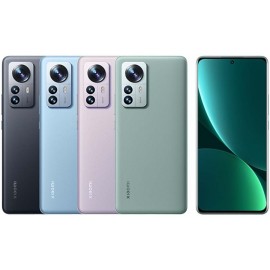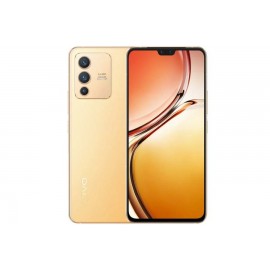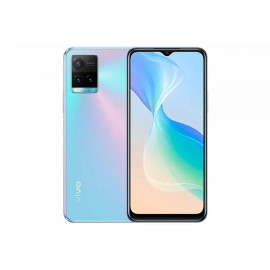Xiaomi 12 Pro (8+256GB)
OverView
Starting with the display, this phone features a 6.73-inch E5 AMOLED panel with WQHD+ resolution. Interestingly, the screen here has a 10-bit color depth which is inferior to the standard Xiaomi 12’s 12-bit colors. Regardless, this...Item specifics
- Audio Quad speaker setup, No headphone jack
- Body 163.6 x 74.6 x 8.16/8.66mm, 204/205 gm
- Colors Blue, Purple
- Connectivity Dual-SIM (Nano), WiFi 802.11 a/b/g/n/ac/ax (Dual-band), Bluetooth 5.1, GPS / AGPS / Glonass / Beidou / NavIC / GLONASS / QZSS, NFC, 5G, USB Type-C
- Display 6.73″ E5 AMOLED panel, 120Hz refresh rate, Up to 480Hz touch sampling rate, Dolby Vision, HDR10+, 1500 nits brightness, 10-bit colors
- Memory 8/12GB LPDDR5 RAM, 128/256GB UFS 3.1 storage (fixed)
- Rear Camera Triple (with LED flash); – 50MP Sony IMX707, f/1.9 primary lens – 50MP f/2.2 ultra-wide lens, 115º FOV – 50M f/1.9 2x telephoto lens
- Security In-display fingerprint sensor, Face unlock
- Software Android 12 with Xiaomi’s MIUI 13 on top
- Resolution WQHD+ (3200 x 1440 pixels)
- Chipset Qualcomm Snapdragon 8 Gen 1 (4nm Mobile Platform)
- Front Camera 32MP sensor (punch-hole cutout)
- Battery 4600mAh (single-cell)
- Charging 120W wired, 50W wireless, 10W reverse wireless
- Sensors Accelerometer, Ambient Light, Gyroscope, Proximity, Electronic Compass, Linear Motor, IR Blaster
Product Description
Starting with the display, this phone features a 6.73-inch E5 AMOLED panel with WQHD+ resolution. Interestingly, the screen here has a 10-bit color depth which is inferior to the standard Xiaomi 12’s 12-bit colors. Regardless, this screen is slightly curved at the sides. It uses second-generation LTPO technology that allows the display’s refresh rate to drop down to up to 1Hz from the native 120Hz. Moving on, the touch sampling rate here is listed at 480Hz. In addition, the phone supports HDR10+ and Dolby Vision—while getting as bright as 1500 nits when viewing compatible content.
Performance and Memory : Inside, the Xiaomi 12 Pro packs Qualcomm’s flagship Snapdragon 8 Gen 1 chipset. It is paired with up to 12GB of LPDDR5 RAM and 512GB of UFS 3.1 storage. The phone will ship with MIUI 13 based on Android 12 out-of-the-box. Xiaomi has also included a vapor chamber cooling setup to keep the core temperature in check.
Camera : The re-designed camera module at the back houses three 50MP sensors. First is the Sony IMX707, which is the latest flagship offering from the company with a 1/1.28″ sensor and 2.44μm pixel size (after pixel binning). As per Xiaomi, this new sensor can capture 49% more light than its predecessor. Accompanying it are a 50MP ultrawide and a 50MP telephoto sensor. Xiaomi 12 Pro also introduces a new feature called “Cyber Focus”, which it inherits from the CyberDog. This will allow the phone to identify different subjects and track their movements.
Over on the front, there is a 32MP selfie camera with support for an advanced beauty portrait mode—just like the regular Xiaomi 12.
Rest of the specs : Moving on, the 12 Pro is the first Xiaomi phone to come with the in-house Surge P1 chip. It allows the phone to support 120W wired, 50W wireless, and 10W reverse wireless charging in a single-cell 4,500mAh battery. In terms of audio, there’s a stereo speaker setup tuned by Harman Kardon.













